Crawl Space Check-in: What’s Normal & What Isn’t
You may not have been in a crawl space that didn’t feel damp before. Hey, you may not have even been in a crawl space before, so how should you be expected to the signs of a damaged crawl space? Lucky for you, the pros on our team have stepped foot in thousands of crawl spaces in homes along the Jersey Shore and across the Garden State.
It’s important to periodically check the crawl space for issues over time. This is because it’s easier and more affordable to correct any minor issues before they turn into greater, more costly and destructive ones. Keep reading to learn about the signs of a damaged crawl space.
What’s Normal Inside the Crawl Space
Crawl spaces are the perfect place to put the “guts” to your house, so to speak. This includes the air conditioning and heater, duct work, plumbing, insulation, and electrical wiring. Adding to the importance of properly maintaining the crawl space, it contains a lot of the functions of your home that you rely on every day. With all of this being tucked away in its own place, it gives unrestricted access to these features if and when any repairs are needed.
If you or the previous homeowner have done work to have the crawl space conditioned, you may see some extra equipment. Depending on the size and needs of your crawl space, there could be a sump pump, a dehumidifier, a vapor barrier on the floors, walls, and any pillars with drainage matting underneath, encapsulated insulation, and more.
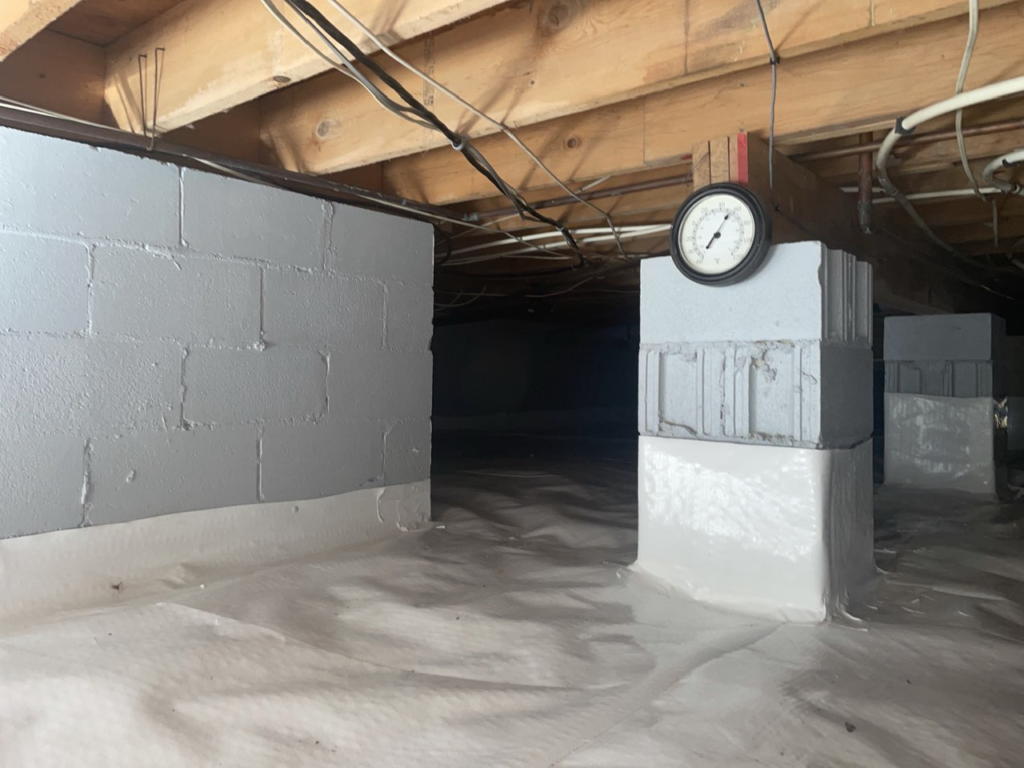
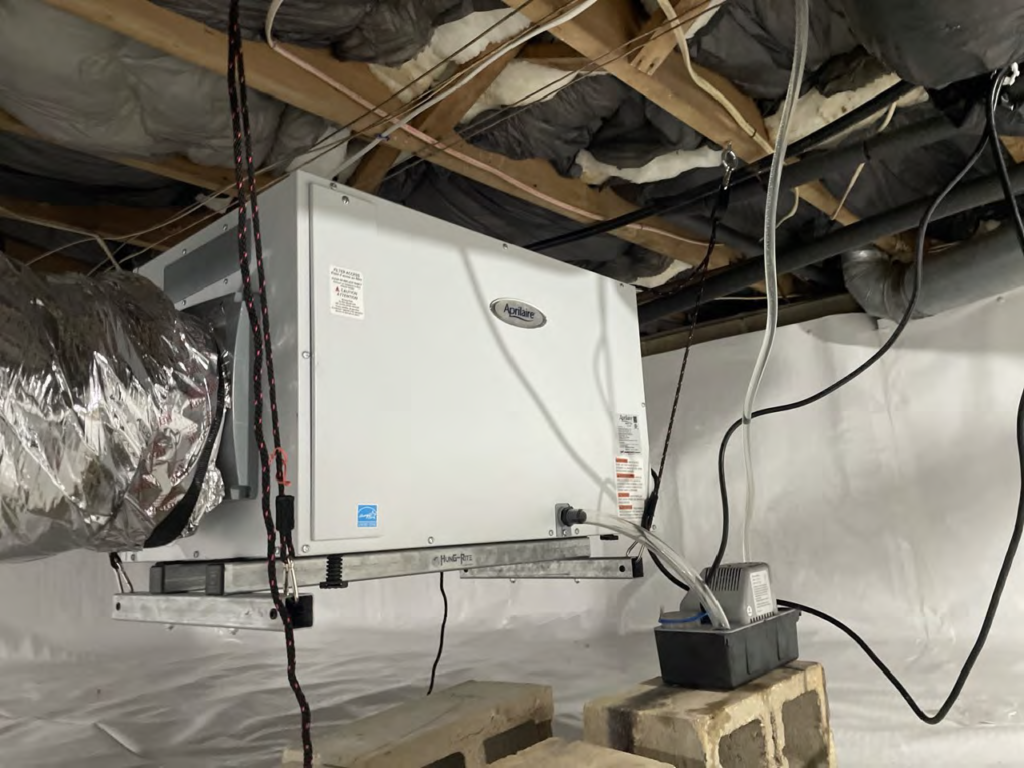
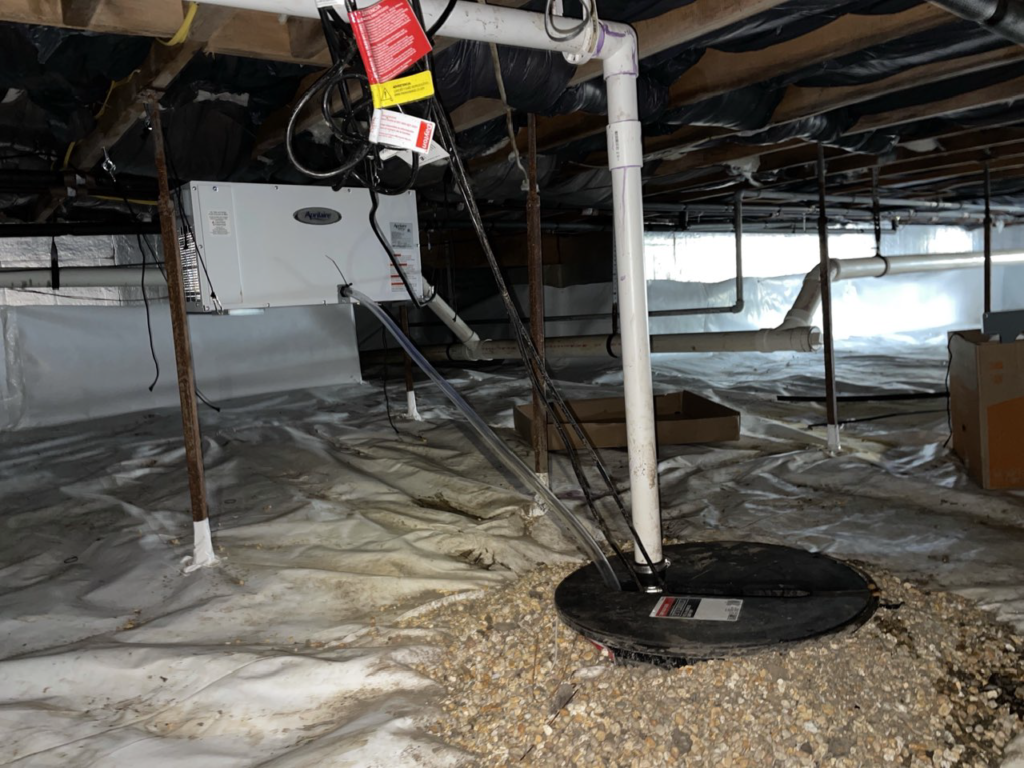
Every house is unique, therefore so is every crawl space! Keep reading to learn about what isn’t normal in a crawl space, the signs of a damaged crawl space, and what needs professional attention ASAP.
What Isn’t Normal & Needs Immediate Attention
Now that we’ve covered what’s normal to find in a crawl space, it’s time to dive into what isn’t normal and what they visually look like.
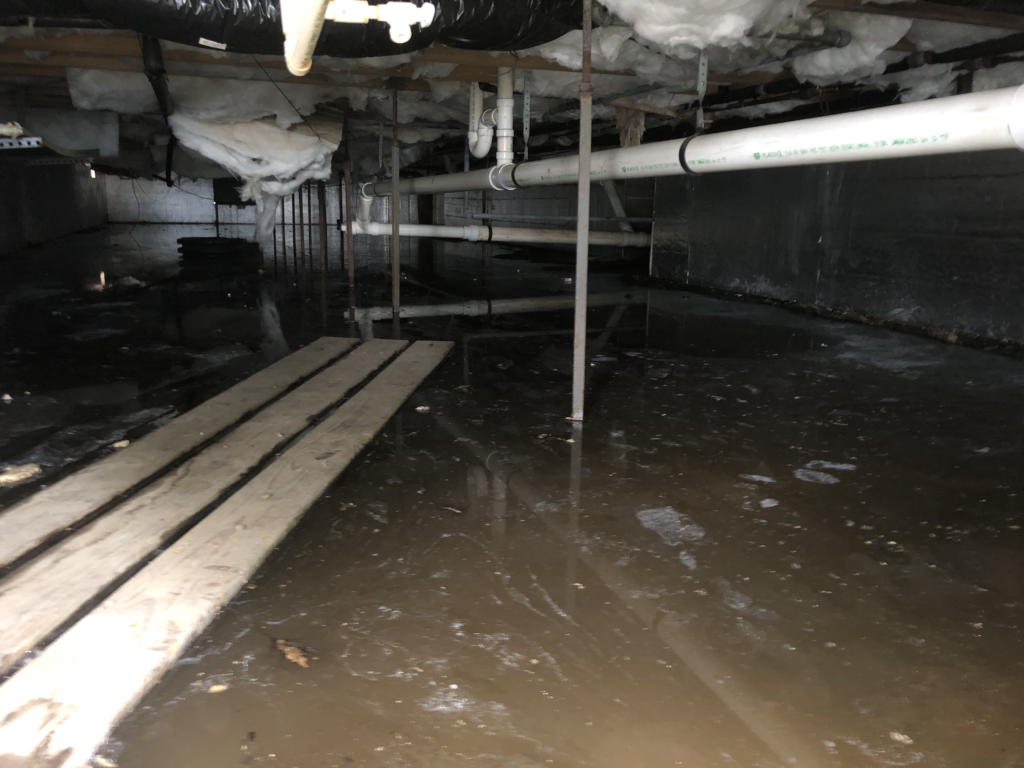
Ground water & standing water
When the soil around the foundation becomes saturated and has nowhere to go, it’ll find a way into your crawl space. This is especially true if your crawl space has a dirt floor. Water can also enter the crawl space through improper roof drainage, gutter downspouts that aren’t extended far away enough from the foundation, grading issues, or leaky door or window wells.
With so much water coming in at once, especially during a rainstorm, it can puddle inside your crawl space and sit there until it eventually evaporates or absorbs into the ground. This ultimately creates the perfect environment for bacteria, mold, and mildew to grow.
Leaks & condensation
Moisture can enter the crawl space by seeping through the porous concrete floors, walls, and pillars, condensation from the air, and leaking pipes. This can look like moisture on the surfaces of the crawl space or stains on the concrete left behind by moisture that has already evaporated.
If you see water stains and discoloration but no moisture itself, don’t assume that you’re in the clear. Check again after the next rain storm to see if there’s excess moisture.
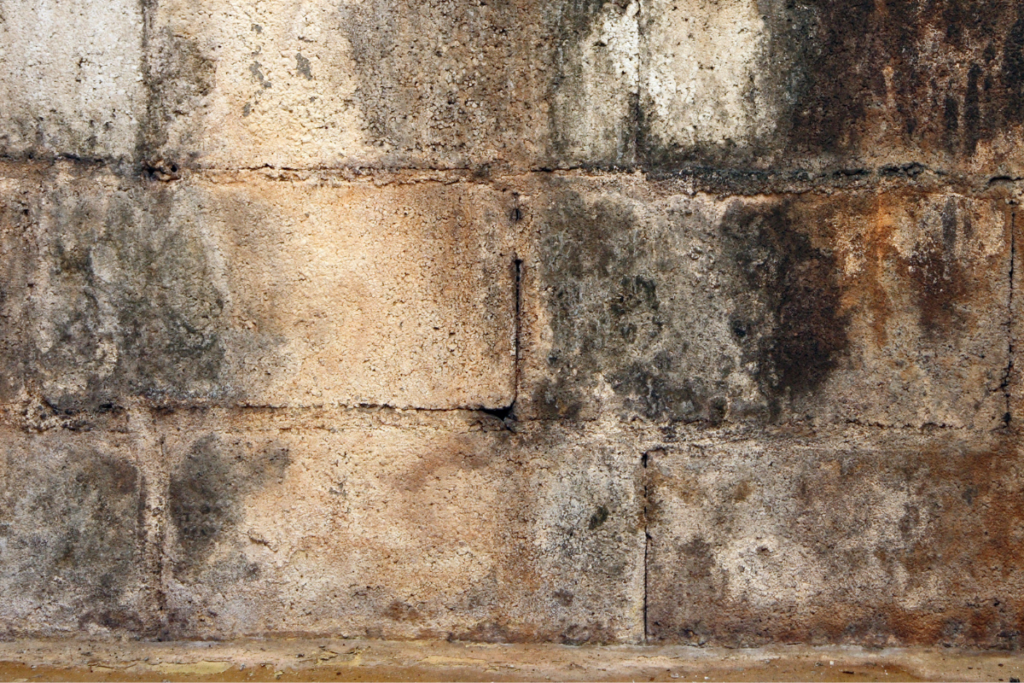
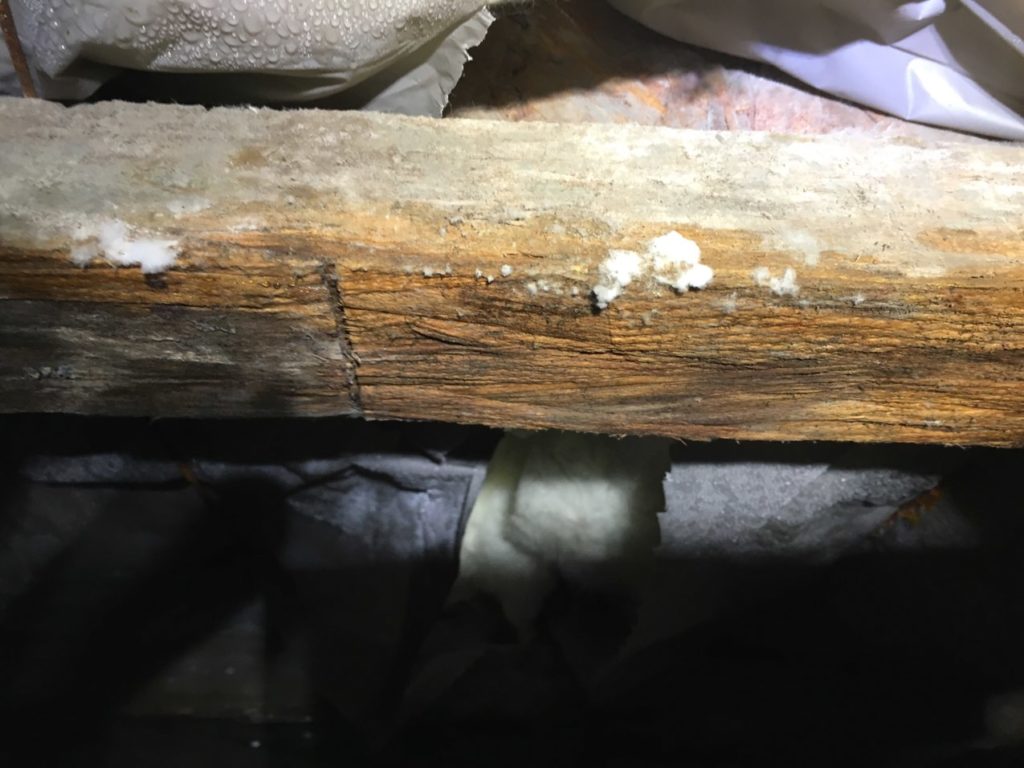
Mold & rot
Mold and mildew thrive on organic materials. This includes the wood structure of your home in the crawl space. Mold can begin growing as quickly as 24-48 hours with the right amount of moisture, and with the crawl space being dark and secluded, it can quickly run rampant.
Check the wood structure of your crawl space for mold and mildew growth. If it’s there, chances are that the wood structure is headed down the path to wood rot.
Click here to learn more about the common types of mold found in homes.
Wet, hanging, or damaged insulation
Besides standing water, this will be the easiest visual sign that there’s an issue in the crawl space. Insulation that is wet, hanging, or displaced is a sure sign of excess moisture and for the latter, pest activity.
Pest activity
As we previously stated, one of the tell-tale signs of pest activity is damaged insulation. This is because similar to us, pests see it as a great source to build a shelter. Other signs of pest activity include chewed or hanging electrical wires, garbage and debris, cracks or holes in the foundation, and droppings.
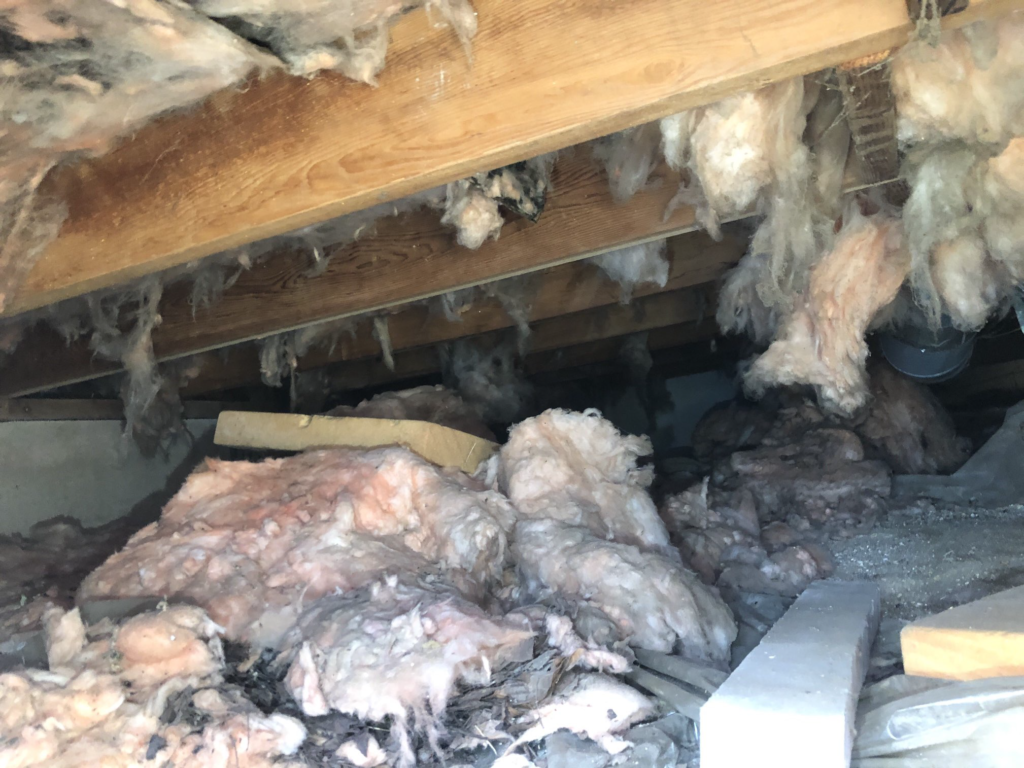
While all of the above factors require professional attention, it’s imperative that you don’t wait to fix any crawl space issues related to mold and mildew growth, as well as pest activity. This is because these factors negatively affect your home’s indoor air quality and can pose a health risk, especially to those with asthma or allergies.
Comprehensive Crawl Space Evaluations by Jersey Shore Crawlspace Enhancement
Don’t wait until it’s too late to address moisture related issues in your home. We offer a 22-point comprehensive crawl space evaluation to monitor the moisture conditions within your crawl space, all the while ensuring that your home is not at risk for issues common in crawl space homes. We perform this evaluation 3 times throughout the year to stay in front of seasonal issues, monitor the moisture conditions, and service your vents to ensure proper ventilation.
In addition to crawl space services, we also provide a wide variety of attic and basement services to combat all moisture related issues in the home.With over 20 years of experience in crawl space transformations and dedicated service to our neighbors along the shore, trust your crawl space with the Jersey Shore’s Crawlspace pros!
Click the button below to speak to a representative or complete the form at the bottom of the page and a representative will be in touch soon.
